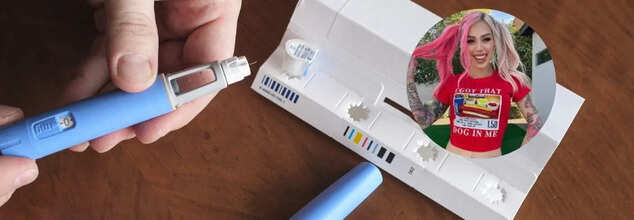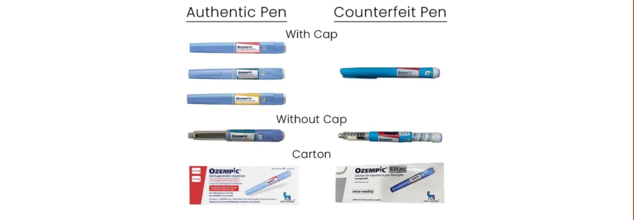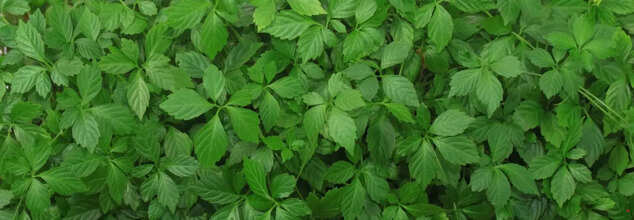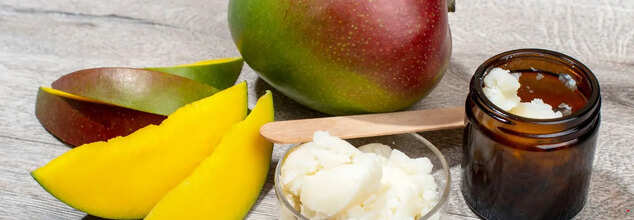
Credit: Canva
'Never Thought It Will Happen To Me': Ozempic Causes Osteoporosis In Woman
A 30-year-old woman recently revealed a shocking side effect of Ozempic that has left everyone worried. Taking to Instagram, Avery shared that after taking the popular weight loss drug for a year, she was diagnosed with osteopenia and osteoporosis, which causes the excessive loss of bone density. Her news has sparked a debate against the abuse of weight-loss drugs and their long-term effect on one's health.
Avery admitted to using Ozempic as part of her struggle with an eating disorder and getting the medication without a doctor's prescription. She said she deeply regrets using it and advised others to watch out. "I am in kind of a shock right now because I never thought this," she posted through her tearful message. "Ozempic can cause bone loss of density, and I never thought that this was going to happen to me because I was only taking it for a year. I have osteoporosis and osteopenia. Ozempic is very easy to get nowadays, and people all over are getting their hands on it. But don't do it. I messed up. Please learn from my mistake."
Weight Loss Drugs Linked To Low Bone Density
Clinical research has associated the use of GLP-1 receptor agonists, such as Ozempic, with bone density loss. A JAMA Network Open Study confirmed that patients taking liraglutide had lower bone density than those who did not. The participants—aged 18 to 65—were randomly split into four groups for one year: one that exercised and received a placebo, one that received just a placebo, a group that received Novo Nordisk's weight loss drug liraglutide and another group that received liraglutide and exercised. Liraglutide, like Semaglutide (Ozempic) is a GLP-1 angonist but less dense.
A trial of 195 adults with obesity found that glucagon-like peptide-1 (GLP-1) receptor agonists, a class of drugs used to treat diabetes, resulted in reduced hip and spine bone mineral density when used without exercise compared to a placebo or exercise alone, researchers said.
Does Ozempic Have Side Effects?
As reiterated by doctors and health care experts, Ozempic is a drug that is tasked to help diabetic patients manage their blood sugar levels and weight. However, recent research has shown its effectiveness in mitigating various addictions like alcohol and drugs by inhibiting hormones. But what people ignore are its side effects, which include:
Nausea is a frequent side effect, especially when starting Ozempic or increasing the dose, and vomiting may occur along with nausea.
Diarrhoea and abdominal discomfort also show up in people using Ozempic, but they generally resolve as your body adjusts.
Ozempic can reduce appetite but may also lead to unintended weight loss or reduced food intake, causing discomfort for some people.
There are certain less common, but serious side effects also, like Pancreatitis, or inflammation of the pancreas.
This drug may also cause severe kidney issues, particularly if dehydration occurs from side effects like vomiting or diarrhoea.

Image Credits: Govt of Virgin Islands
Your Ozempic Weight Loss Injection Be A Deadly FAKE Jab? Little-Known Signs To Spot
As demand for weight loss medications like Ozempic skyrockets globally, health officials are sounding the alarm: a surge of counterfeit jabs—often sold through unregulated online vendors and even beauty salons—are endangering lives. These fake injections are deceptively difficult to identify and, in many cases, could trigger life-threatening complications, including hypoglycemic shock, seizures, and even coma.
While these medications have revolutionized weight loss management for individuals with obesity and Type 2 diabetes, the black-market boom has opened the floodgates to dangerous look-alikes. Here’s everything you need to know about identifying fake Ozempic jabs, understanding their health risks, and ensuring you're accessing safe, approved treatment.
Ozempic (semaglutide) and its counterparts, Wegovy and Mounjaro (tirzepatide), are GLP-1 receptor agonists originally designed to help manage blood sugar levels in Type 2 diabetes patients. Their weight loss effects, however, made them blockbuster drugs—with users shedding up to 33 lbs in clinical trials.
Unsurprisingly, this popularity has given rise to a dangerous market of counterfeit versions. Criminal networks are capitalizing on demand by relabeling insulin pens, creating fake formulations in unsterile environments, and peddling them on platforms where regulation is minimal or absent.
Andy Morling of the UK’s Medicines and Healthcare products Regulatory Agency (MHRA) reports that fake jabs have been flooding the market since early 2023. Over 600 counterfeit Ozempic pens have been seized in the UK alone. “There’s no way of knowing what’s really inside them,” warns Morling. “They could be made with arsenic, cement, or even rat poison.”
How Dangerous Are Fake Ozempic Pens?
The short answer: extremely. The risks go far beyond inefficacy.
Some fake jabs contain:
Insulin – Can dangerously drop blood sugar, leading to seizures or coma.
Toxic substances – Seized products have been found to contain mercury, cement, and rat poison.
Bacteria – Due to non-sterile production environments, leading to infections.
Wrong or mixed medications – Including none of the intended drug at all.
Dr. Nick Kaye of the UK’s National Pharmacy Association has voiced concern about a potential explosion in black-market sales. “The supply of Ozempic is already tight. That, coupled with high demand, creates a perfect storm for counterfeiters.”
Telltale Signs Your Ozempic Is Fake
Identifying a counterfeit jab can be difficult without lab testing, but drug experts have noted some red flags:
Suspicious labeling: A genuine Ozempic pen comes with pre-printed, high-quality labeling—not stuck-on, crooked, or low-resolution stickers.
Dark or discolored pens: Most genuine pens are light in appearance and consistent in color.
Damaged packaging: Misspelled text, missing serial numbers, or unclear batch codes are warning signs.
Non-pen formats: Real Ozempic comes in pre-filled injector pens. If your product arrives in a syringe or vial from an online order, it’s almost certainly fake.
Sold on social media: Legitimate medications are never sold on Instagram, TikTok, or salon backrooms.
Still unsure? Check the batch number and barcode with the manufacturer or pharmacy.
Online vendors and salons may promise affordability and availability—but that’s where safety ends.
Unlike licensed pharmacies, these sources do not:
- Verify your BMI or medical history
- Provide guidance on correct dosage and administration
- Offer patient counseling or disclose side effects
- Follow FDA or international regulatory standards
Regulated services screen for medical appropriateness and ensure that the drugs have passed stringent safety tests. Using counterfeit jabs skips all of these safeguards.
If You Do not Qualify for the Treatment, How Can You Lose Weight?
If you don’t qualify for Ozempic or similar weight loss medications, it’s essential to explore safe alternatives rather than seeking out illicit versions. Healthy lifestyle changes remain foundational to weight management:
- Eat whole foods and reduce processed sugar
- Incorporate daily physical activity—150 minutes per week
- Avoid crash diets or over-the-counter supplements with unverified claims
- Speak with a doctor or dietitian for personalized support
For those with disordered eating patterns, reaching out to mental health professionals or organizations like Beat Eating Disorders can offer a healthier path.
When the Price Seems Too Good to Be True
It probably is. A major lure of counterfeit Ozempic is the price tag—black-market versions are often heavily discounted. But remember: this comes at the cost of your health, safety, and potentially, your life.
If you’re unsure about a product, consult your pharmacist or primary care provider. Always ensure that any medication you take has been prescribed by a qualified healthcare provider and obtained from a licensed source.
As the obesity epidemic collides with a global supply crunch, counterfeiters are betting on your desperation. Don’t fall for it. The allure of a quick fix should never outweigh the risks to your health.
Choose regulated, prescription-only weight loss treatments. Trust your pharmacist. Ask questions. And if something feels off, it probably is. Fake Ozempic isn’t just ineffective—it’s potentially lethal.

Credit: Canva
Jiaogulan Can Boost Longevity-Know Everything About It
You’ve likely heard of ginseng and ginkgo biloba—two Chinese herbs long praised for enhancing cognitive function, boosting energy, and reducing stress. But jiaogulan, a lesser-known botanical wonder, is now making waves for its potential to rev up metabolism, lower cholesterol, reduce inflammation, and even promote longevity.
Often referred to as the “immortality herb,” jiaogulan (Gynostemma pentaphyllum) grows in the mountainous, forested regions of Asia. It's commonly known as “southern ginseng” or “miracle grass,” thanks to its wide array of health-promoting properties.
“Few people in the US know about it,” says Dr. Michael Aziz, a New York City-based, board-certified internist and regenerative medicine expert. Aziz, who consumes 900 milligrams of jiaogulan daily, underscores the growing interest in this plant and breaks down the science behind its rising popularity.
Though it has been used for centuries in traditional medicine, jiaogulan’s popularity has spiked in the last decade. Found primarily in herbal teas and dietary supplements, its leaves are valued for their high antioxidant potential.
“Jiaogulan tea has a very high ORAC value (a measure of antioxidant capacity). It’s eight times higher than what is found in green tea,” notes Aziz, author of The Ageless Revolution. He recommends brewing one to two teaspoons of dried jiaogulan leaves in 250 milliliters of water. The tea, he says, has a bitter yet slightly sweet taste, though others may describe it as earthy.
The bitterness comes from the plant’s saponins, natural compounds believed to contribute significantly to its health effects. “The bitter taste and cold nature of [jiaogulan] are particularly effective in clearing heat and detoxifying the body,” researchers wrote in the Journal of Functional Foods (January edition), highlighting its potential in managing viral hepatitis, chronic bronchitis, and gastroenteritis.
In contrast, the herb’s sweet notes are said to nourish the heart and protect the liver, benefiting the flow of qi and blood. It has also shown promise in helping with hyperlipidemia, hypertension, fatty liver, insomnia, and headaches.
Jiaogulan contains gypenosides — saponins structurally similar to the ginsenosides in ginseng. These compounds activate AMP-activated protein kinase, a key enzyme that helps maintain energy balance within cells. “They also improve insulin signaling and the function of mitochondria, the energy producers of our cells,” Aziz explains. These cellular improvements may support healthy aging and extend lifespan.
Jiaogulan may also exhibit anticancer properties and help lower blood pressure. However, like all supplements, it’s not without potential side effects. While generally safe, some users have reported nausea, diarrhea, dizziness, blurred vision, or even tinnitus.
People taking medications — particularly those with diabetes — should consult their doctors before incorporating jiaogulan into their routine. Aziz warns that the herb can significantly lower blood sugar, making dosage adjustments necessary for some.
As more people look to traditional herbs for modern health solutions, jiaogulan may be the next big thing in natural wellness.

Credit: Canva
This Fruit Butter Can Protect Your Skin From UV Rays
Mango butter—also known as mango oil and mango kernel fat—is a type of oil that is extracted from the kernels of mango seeds. But what is the big deal about mango butter? Well, it is packed with a lot of nutrients that are extremely beneficial for your skin.
How Does Mango Butter Help Skin?
It is generally non-comedogenic. Mango butter does not have compounds that are known to irritate skin, even if yours is sensitive. One exception to this is that if you have acne, you may avoid using mango butter on your face.
Moreover, mango butter also protects from harmful Ultraviolet (UV) Rays. Mango contains salicylic acid and antioxidants, which are known to protect from sun damage.
Most notably, Vitamins C and E are in rich supply in mangoes. A 2012 study suggests that, when combined, these two ingredients may provide some protection for your skin against environmental damage.
There is no heavy scent in mango butter. While you might expect a fruity zing, most people report a mild scent.
It's antibacterial and antimicrobial, which helps clear skin. In a 2020 study, wool treated with mango seed oil was less susceptible to the presence of various types of bacteria.
It may make your hair shiny. The same properties that promote soft skin may also boost your hair's natural shine and reduce scalp dryness and flakiness.
What Is In Mango Butter That Makes It So Special?
Mangoes are loaded with nutritious substances, which is partly why they are a dietary staple around the world. They are packed with fibre, vitamins (C, B6, A, E, and more), and minerals. They are also a good source of folate, potassium, calcium, and beta-carotene.
Many of the vitamins found in mango hold skin-improving powers, so it makes sense to blend it into butter.
ALSO READ: This One “Fattening” Vegetable Could Actually Be A Part Of You Weight Loss Diet
Thanks to its fatty acid profile (it is chock-full of oleic, stearic, and linoleic acids), mango butter is used as a substitute in beauty products for cocoa butter, a long-time skin-softening favourite.
As a topical cream, it can pass along benefits like softer skin, and may offer UV protection. The same 2020 study mentioned above suggests that wool treated with mango seed oil showed a decreased amount of UV damage—so it may do the same for the skin.
Mango butter also performed spectacularly in a small 2008 study on treatments for cracked heels. A mango butter-based solution worked better than a commercially produced lotion regarding the reduction of scars and cracks in the skin and increased shelf life. It also showed similar or better results in its ability to moisturize.
ALSO READ: Is Yerba Mate Nature's Answer To Ozempic? Risks And Benefits
© 2024 Bennett, Coleman & Company Limited

